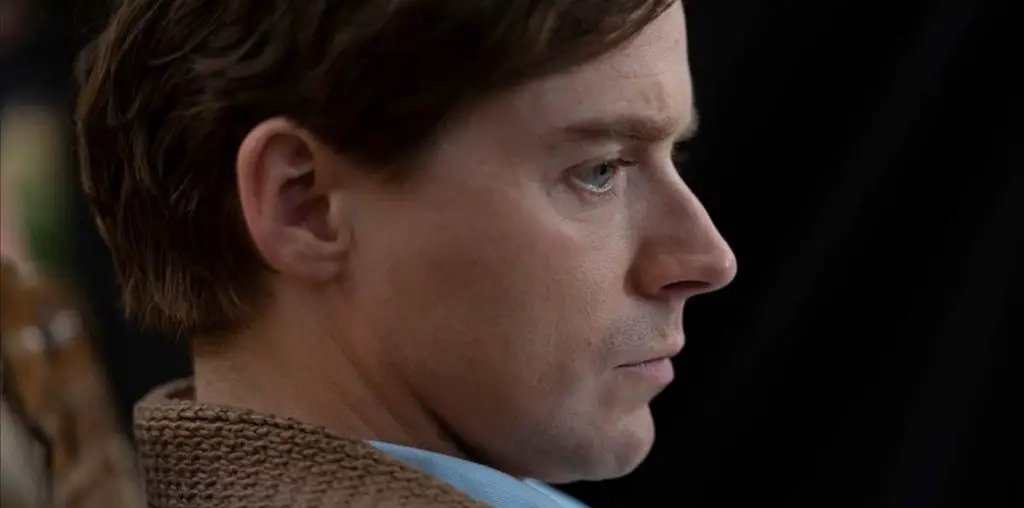
“Nobody’s Perfect” is the appropriate title for Robert Tutak’s visually stylish but emotionally empty digital feature focusing on the immature behavior of five gay New Yorkers and a foul-mouthed f*g hag hanger-on who fall in and out of love and lust.
“Nobody’s Perfect” gets off to a very wrong start when ER and Joshua, a gay couple whose relationship has hit a rocky patch, get stuck in an elevator in their apartment house. The day happens to be their anniversary, but ER is so angry with Joshua that he grabs the bouquet of flowers and begins to bang them over his head. Joshua takes his flowery beating without protest and then pulls out a cake and smacks ER in the face with it. Ideally, such as slapsticky duo as Joshua and ER would seem like logical candidates to attempt to move a piano up a long flight of stairs, but unfortunately they remain stuck in the elevator and rehash the messy business that brought them to their state of inane violence.
Flashbacking (in black-and-white, no less!) we discover that Joshua is a film teacher who had a brief affair with Teo, a Korean student with a pronounced Australian accent. This particular flashback catches Teo at the conclusion of the relationship, at which point he complains to his straight gal-pal Karen about how much he hates “faggots.” Karen, who is dressed in fashionably frumpy thrift-shop attire and uses epithets with no concern to where they are placed in a sentence, reminds Teo that he is clearly not serious and later suggests that he try to find a new man via the personals in the Village Voice. For a few minutes, Karen keeps shoving the Village Voice into Teo’s face and he keeps shoving the newspaper into the trash, only to have Karen take it out and repeat the exercise.
ER, however, gets himself involved in the bickering couple of Frederic and John. Frederic wants to help ER get Joshua jealous and insists that John pretend to be infatuated with ER. And guess what? John doesn’t have to pretend…but when he brings ER home one night Frederic makes a surprise appearance (which should not have been a surprise, considering John brought ER back to the apartment where he and Frederic live). Frederic humiliates John in front of ER, calling into view John’s smaller-than-normal manhood. John packs his suitcase and grabs a taxi to Yonkers (though why he is going to Yonkers is not clear).
Frederic, meanwhile, rebounds from John’s departure to shower, gel up his hair, get into tight clothing and cruise the local bars. And who should he pick up but Teo? They go back to Frederic’s place for fun, then Teo leaves to go home, and then Frederic calls him to come back. Frederic and Teo actually spend more time that evening ping-ponging back and forth between each other’s places in a sequence which is horologically and intellectually impossible to fathom.
Will Frederic stay with Teo or will he reconcile with John? Will ER and Joshua get out of the elevator and get on with their life? Will Karen actually have more to do with her life than drop bitchy asides about her gay friends’ bedhopping? As soaps go, “Nobody’s Perfect” is none too compelling and most of the problem comes in the frightfully nasty screenplay. While the typical soap opera is an exaggeration of reality, at least there is a balance between characters you root for and characters that you love to loathe. In “Nobody’s Perfect” there is no one to root for. The film is populated with the most vacuous, condescending, emotionally-limited adults imaginable and it is difficult to consider the average viewer (either gay or straight) wanting to even share a cocktail with them, let alone sit around for 90-odd minutes to see them rise and fall into various horizontal positions.
The film is rich with the talk of sex (the couplings discreetly take place out of frame), but it is absent of compassion or sincerity, let alone anything that could be mistaken for love. What it does have, however, are plenty of tinny insults which the characters spit with merciless disregard. “Nobody’s Perfect” becomes very depressing to listen to as the cast engages in a constant stream of put-downs, sneers and hurtful commentary; what self-respecting person would want to absorb such nastiness, let alone watch others inflict it on their supposed friends and lovers?
The near-saving grace to “Nobody’s Perfect” is not in its words, but its visuals. Filmmaker Robert Tutak may have taken a wrong turn with his screenplay, but the film has a stylish flair that nearly compensates for the bile swishing about. Tutak compensates for the film’s no-budget production by shooting in very tight close-ups and illuminating the scenes with bold and garish hues (mostly courtesy of neon signs and colored light bulbs), chopped into a skein of quick cuts that nervously zig-zag through every possible corner of the scenes being played out. The result is a compact, claustrophobic look which is designed to mirror (to some extent) the mean-spirited intensity of the story, and credit is due to cinematographer Kaziuk Zdjeciowiec and editor Ziuta Sklejarka for bringing this intense visual look to the screen. But ultimately the film’s production style surpasses the leaden elements of the screenplay by bringing more color and imagination than the name-calling and putdowns that pollute the dialogue.
Tutak is a Polish-born filmmaker making his American feature debut with this project. His talent is not without recognition (he is the recipient of a Fulbright Foundation Grant and teaches film at Brooklyn College). While he has no problem understanding the language of cinema, it is a shame that his screenplay became bogged down into an ill-focused gay spin on American soap opera dramatics.
